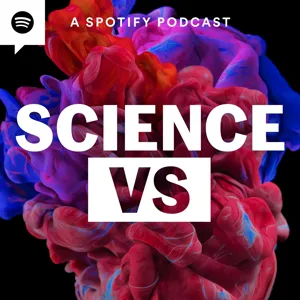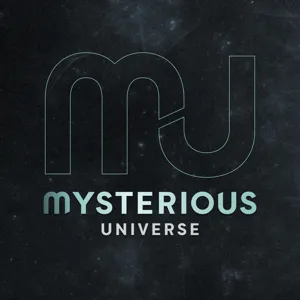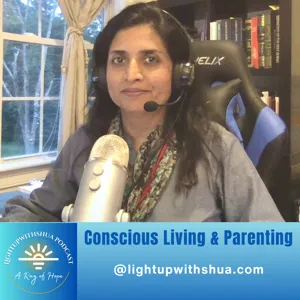Podcast Summary
The eruption of Mount Saint Helens in 1980 caused shock and devastation in Washington state: The 1980 eruption of Mount Saint Helens resulted in significant damage and loss of life, but pales in comparison to deadlier volcanic events in history
The eruption of Mount Saint Helens in 1980 was a powerful and devastating natural disaster. Twenty-five-year-old Christian Jacobson, a resident of Redmond, Washington, woke up to the sound of the eruption and was shocked by the fine ash that covered everything in his town. The ash was so thick in some areas that it turned day into night. The eruption also created a massive wave of heat, flattening trees and melting ice to create a giant mudflow that destroyed bridges and other infrastructure. Fifty-seven people lost their lives in the eruption, but it was not even close to the deadliest volcanic event in history. Just five years later, a volcano in Colombia erupted, causing a landslide that killed 24,000 people. The eruption of Mount Saint Helens serves as a reminder of the immense power of nature and the importance of being prepared for natural disasters.
Volcanoes: Destructive and Awe-Inspiring: Volcanic eruptions can lead to local and global damage through ash, sulfur dioxide, and other gases, potentially causing climate change and even a new ice age.
Volcanoes, especially large ones like Yellowstone, have the potential to cause catastrophic damage not only locally but also globally. The eruption of a volcano can lead to the destruction of entire regions and even change the climate, potentially causing a new ice age. This is due to the massive amounts of ash, sulfur dioxide, and other volcanic gases that can be released during an eruption. These particles can block sunlight and disrupt weather patterns, leading to cooling temperatures and other climate changes. This was discussed with Jill Plunkett, a volcanology expert from Queen's University Belfast, who explained that studying the effects of ancient volcanic eruptions can take scientists to unexpected places, such as drilling deep into ice fields to gather data. While the power and destruction of volcanoes can be awe-inspiring, it's important to remember that they also pose a significant risk to people and the environment.
Volcanic Ash in Ice Cores: A Valuable Time Capsule: Volcanic ash in ice cores acts as a time capsule, providing crucial info on past eruptions' location, size, and climate impact. Scientists use ash's unique chemical makeup as a fingerprint to identify source volcanoes.
Volcanic ash, or tephra, found in ice cores acts as a valuable time capsule for scientists. This ash, which is essentially glassy material, can provide crucial information about past volcanic eruptions, including their location, size, and climate impact. Scientists like Jill use the unique chemical makeup of tephra as a kind of fingerprint to identify the source volcano. By analyzing the ash's composition and comparing it to known tephra signatures, they can narrow down the possibilities and make a positive identification. For instance, Jill identified a perfect match to an Alaskan volcano named Ocmuk, which erupted explosively over 2000 years ago and was one of the largest eruptions in the last 2500 years based on the amount of sulfur found in the ice core. The climate impact of this eruption can be inferred by studying tree ring records, which show periods of growth indicating good weather and periods of stunted growth indicating cold and unfavorable conditions. Overall, the analysis of volcanic ash in ice cores provides essential insights into past volcanic activity and its impact on the climate.
Volcanic eruptions can lead to significant climate changes: Volcanic eruptions can cause climate changes with far-reaching consequences, including food shortages and societal impacts.
Volcanic eruptions, like the one from Mount Ochmus (Ocmulgee) in ancient times, can have far-reaching consequences beyond their immediate surroundings. The highly volatile magma of such eruptions can lead to significant climate changes, including cooler temperatures that can negatively impact agriculture and human societies. The Roman Republic, for instance, faced food shortages and extreme weather conditions following the eruption, which may have contributed to its collapse. The magma's volatile nature is due to its high silica and gas bubble content, making it more explosive than other magmas. While Yellowstone, with its direct pipeline from the Earth's core, has the potential for a massive eruption, scientists estimate that it wouldn't cause an ice age but could bring temperatures down in the northern hemisphere for several years. The possibility of another Yellowstone eruption is a pressing concern.
Monitoring volcanoes involves both technology and animal behavior: Volcanoes don't follow neat timetables for eruptions, making close monitoring and observing animal behavior crucial for assessing potential eruptions
Volcanoes, such as Yellowstone in the United States, cannot be accurately predicted based on past eruption schedules. Contrary to popular belief, volcanoes do not erupt on neat timetables. Instead, scientists like Mike Poland from the United States Geological Survey monitor these geological structures closely to detect any signs of potential activity. During his career, Mike has witnessed the importance of animal behavior in identifying subtle changes. For instance, during his close encounter with Mount Saint Helens, a mountain goat's presence on the same ridge as him provided a sense of calm, as the goat seemed to sense the volcano's inactivity. Thus, monitoring volcanoes through technology and observing animal behavior are crucial components in assessing their potential for eruption.
Monitoring Yellowstone Volcano with GPS, Vibration, and Gravity: Scientists use advanced methods to monitor Yellowstone's magma movements and there's no imminent eruption risk, with signs of eruption giving decades of warning.
Scientists like Mike use various methods to monitor Yellowstone volcano, including GPS measurements, vibration detection, and gravity changes. These techniques help them understand the magma movements beneath the volcano and assess if it's showing any signs of imminent eruption. Contrary to popular belief, there have been no concerning signs of Yellowstone erupting soon, as indicated by stable gravity readings, minimal sulfur dioxide emissions, and solid magma conditions. Mike and his team believe that if Yellowstone were to erupt, it would give decades of warning with noticeable ground changes and increased seismic activity. So, rest assured, Yellowstone is not going to erupt tomorrow.
The Role of Volcanoes in Earth's History and Life: Volcanoes contribute to Earth's creation, shape continents, form oceans, and impact life, but their unpredictable nature keeps scientists on edge.
While Yellowstone's volcanic activity may not pose an immediate threat to the world, volcanoes as a whole play a crucial role in the existence of life on Earth. The last 600 volcanic eruptions in Yellowstone over the past 600,000 years resulted in local devastation, but nothing catastrophic for the world. However, there are currently dozens of volatile volcanoes around the world, and despite scientific advancements, it's impossible to predict exactly when they will erupt. Volcanoes have contributed significantly to the creation of our planet, with magma helping to form continents and gases contributing to the formation of oceans and the atmosphere. For geologist Mike Rampino, the power of volcanoes is a reminder of nature's immense capabilities. In total, there are 102 citations in this episode, and for those interested in learning more, they can refer to the transcript linked in the show notes. This episode was produced by Michelle Dang and Nicholas Del Rose, with contributions from Wendy Zuckerman, Rose Rimmler, Hannah Harris Green, Blythe Terrell, Barbara Rodriguez, Sam Baer, Peter Leonard, Marcus Bergala, Emma Munger, Bobby Laud, Brian Wilcox, Doctor Mike Rampino, Doctor Jasmine Scarlett, Doctor Joe McConnell, Doctor Rosalie Lopez, and Doctor Thor Thordarson. A special thanks to the Zuckerman family and Joseph LaBelle Wilson. I'm Wendy Zuckerman, and I'll see you next time.






